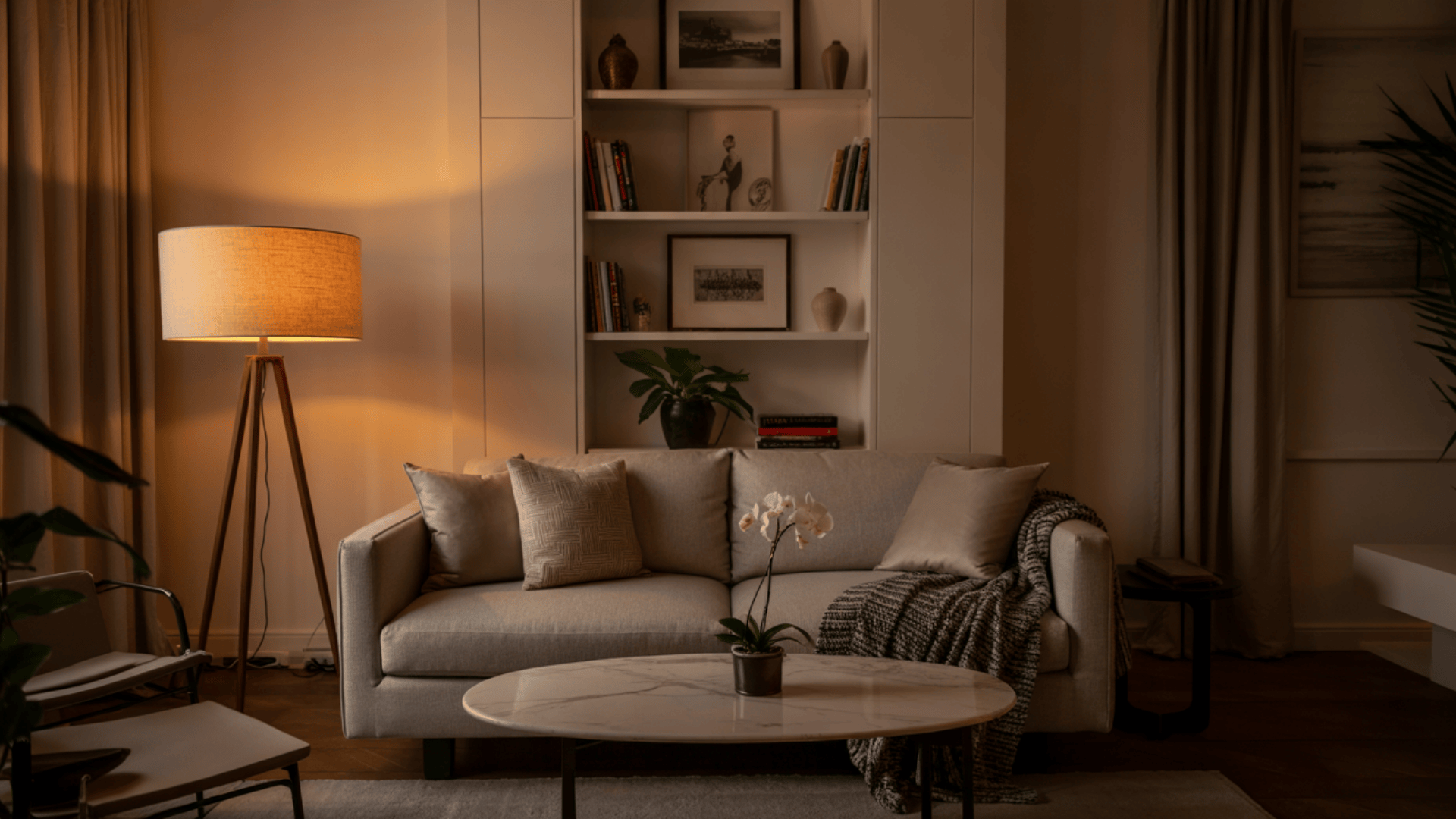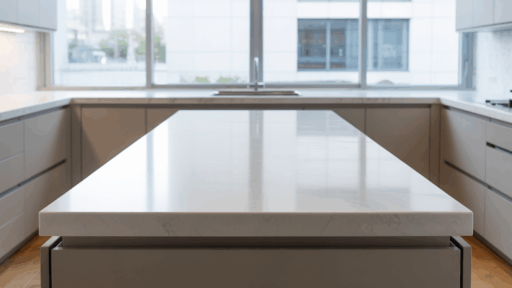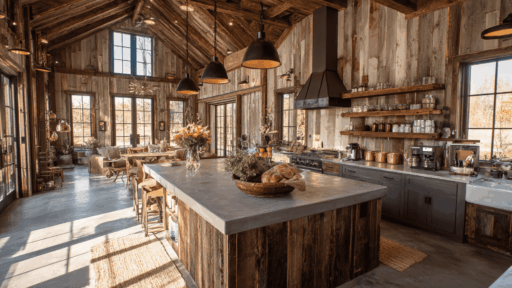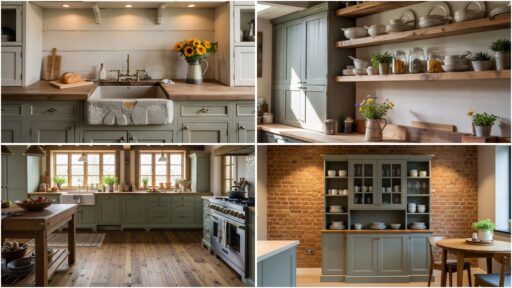Designing a modern apartment isn’t just about picking trendy furniture; it’s about making your space work smarter, feel bigger, and reflect who you are.
If you’re in a cozy studio or a two-bedroom city pad, smart planning makes all the difference.
From layout and lighting to storage and style, this article covers practical, modern apartment ideas that work in real life, not just in glossy magazines.
Looking to create a space that feels open, welcoming, and totally “you”? These tips help you avoid expensive mistakes, get more from every square foot, and turn even the smallest apartment into a stylish, functional home.
If you’re just moving in or refreshing your current place, start with these foundation ideas and build up from there. Let’s turn your apartment into your favorite place to be.
Start Smart: Modern Apartment Design Begins with Planning
Before you start shopping or rearranging furniture, take time to plan your space with purpose. A well-designed modern apartment doesn’t happen by accident; it’s the result of smart, intentional choices.
Think about how you live day to day, what your space needs to do for you, and the kind of atmosphere you want to create.
Planning helps you avoid buying the wrong furniture, wasting money on trendy items that don’t fit, or ending up with a cluttered layout.
By setting your design direction, measuring your space, and understanding your routines, you’ll lay the groundwork for a cohesive and comfortable apartment.
With the right plan in place, every design decision becomes easier and more effective.
Foundational Tips for Modern Apartment Design
Getting your apartment design right starts with solid planning. These foundational ideas help you make smart decisions before you spend money or rearrange furniture. Think of them as your roadmap to success.
1. Pick One Design Style Before You Shop
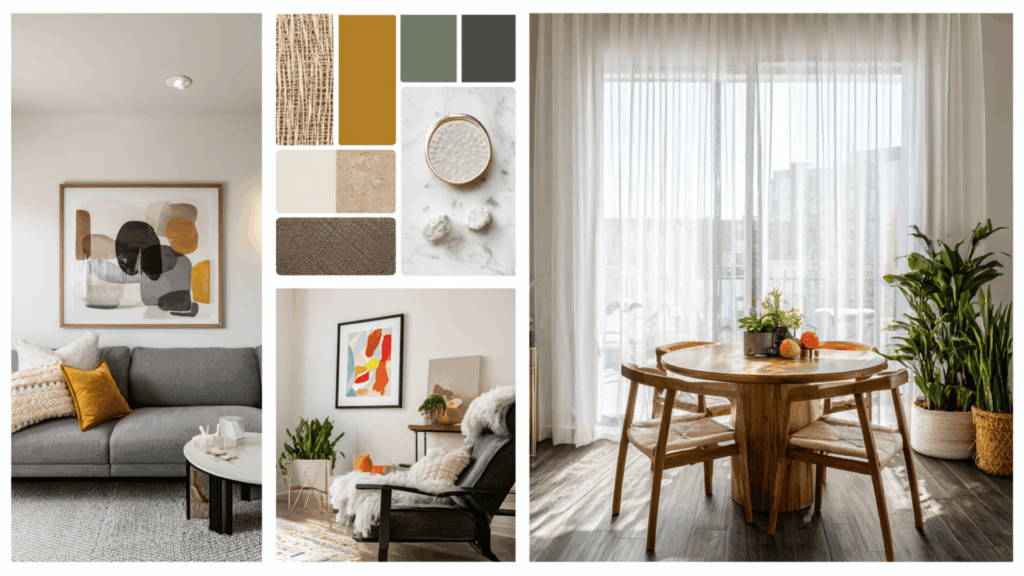
Pick one main style before buying anything. Minimalist uses clean lines and neutral colors. Scandinavian combines light woods with cozy textures.
Industrial features raw materials and metal accents. Modern traditional blends classic shapes with contemporary updates. This choice guides every future decision and prevents costly mistakes.
2. Design Around Your Daily Routines

Spend one week tracking how you use your space. Note where you eat breakfast, work from home, relax in the evenings, and sleep.
Design your layout around these real patterns instead of copied magazine looks. This ensures your apartment works for your actual lifestyle, not someone else’s.
3. Create a Realistic Budget Plan

Allocate your money wisely across categories. Spend 40% on major furniture like sofas and beds. Use 30% for lighting and storage solutions. Reserve 20% for decorative items like art and plants.
Keep 10% for unexpected needs or perfect finds. This prevents overspending on small items while neglecting important pieces.
4. Measure Your Apartment Carefully
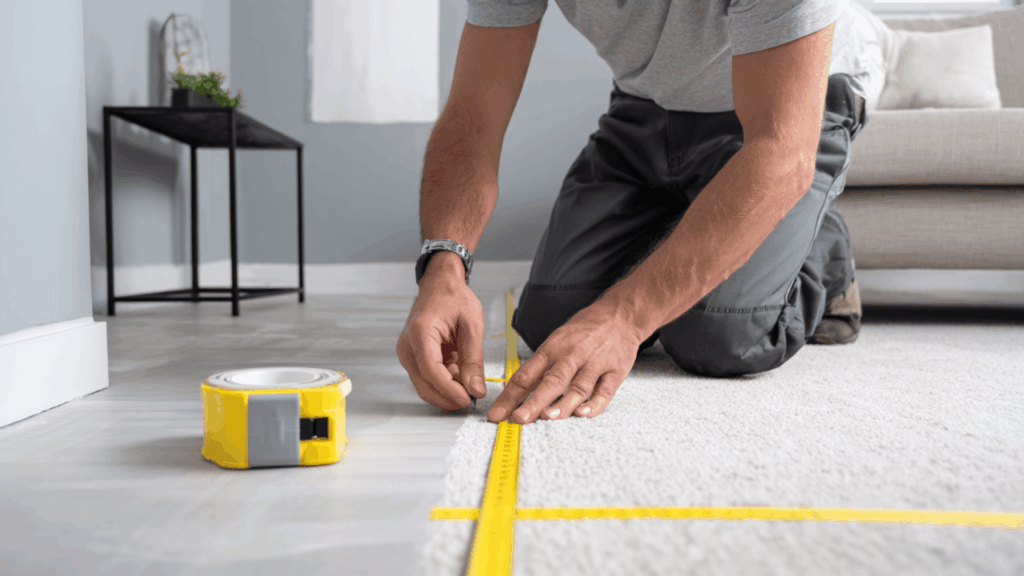
Know your room dimensions, doorway widths, and ceiling heights before shopping. Measure existing furniture you plan to keep. Check that new pieces fit through doorways and leave enough walking space.
Use painter’s tape on floors to visualize furniture placement before purchasing anything expensive.
5. Start with Neutrals, Add Color Later

Use white, cream, gray, or beige for expensive items like sofas and major furniture. Add personality through colorful pillows, artwork, plants, and accessories.
This approach lets you change your look seasonally without replacing costly pieces. Neutral foundations also make spaces feel larger and brighter.
6. Make the Most of Natural Light

Observe how sunlight moves through your space during different times of day. Arrange seating areas to take advantage of morning or evening light. Use mirrors strategically to bounce light into darker corners.
Position work areas near windows for better task lighting and reduced eye strain.
7. Respect Shared Walls and Neighbors

Apartment living means shared walls and floors. Choose soft furnishings like area rugs and heavy curtains to absorb sound transmission.
Avoid placing speakers, exercise equipment, or heavy furniture against shared walls. Be mindful of noise levels during quiet hours to maintain good neighbor relationships.
8. Use Vertical Space from the Start
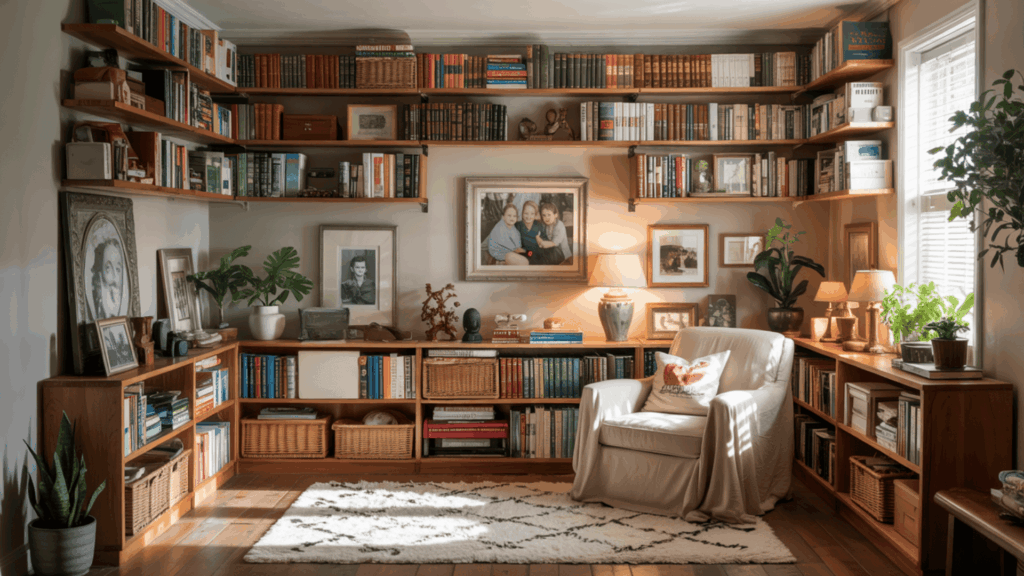
Use wall space for storage and decoration instead of filling valuable floor area. Install shelves up to ceiling height for books and displays.
Hang artwork in vertical arrangements to draw eyes upward. This approach keeps pathways clear while making rooms feel larger and more organized.
Space Planning Ideas for Small Modern Apartments
Smart furniture arrangement can make any apartment feel twice as large. These space planning strategies help you create better flow, define separate areas, and maximize every square foot you have to work with.
9. Float Furniture Off the Walls
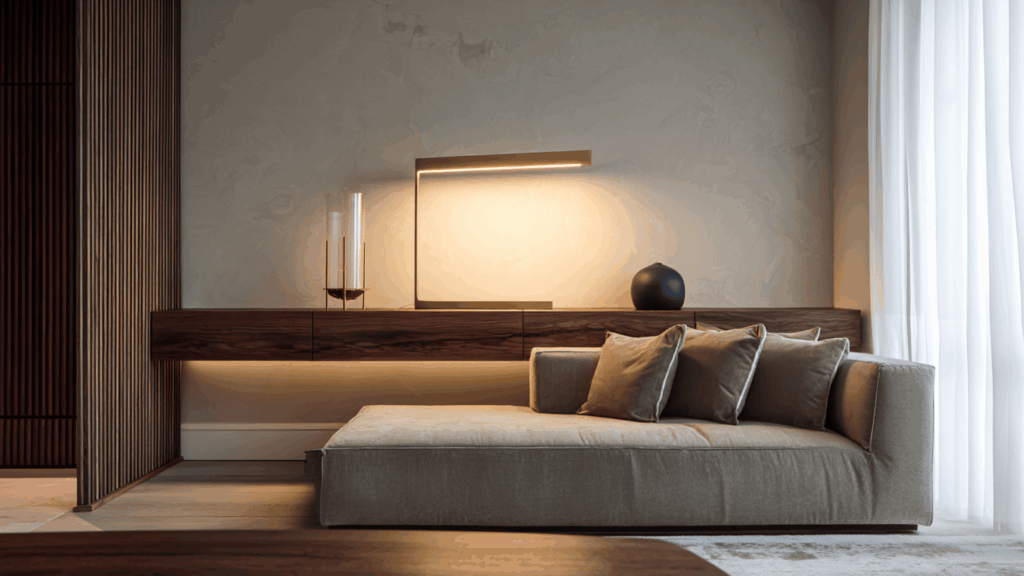
Pull your sofa 12-18 inches from the wall to create a more spacious feeling throughout the room. Use the space behind for a narrow console table, plants, or floor lamps.
This technique works especially well in small spaces where wall-hugging furniture makes rooms feel cramped and uninviting.
10. Define Areas with Rugs
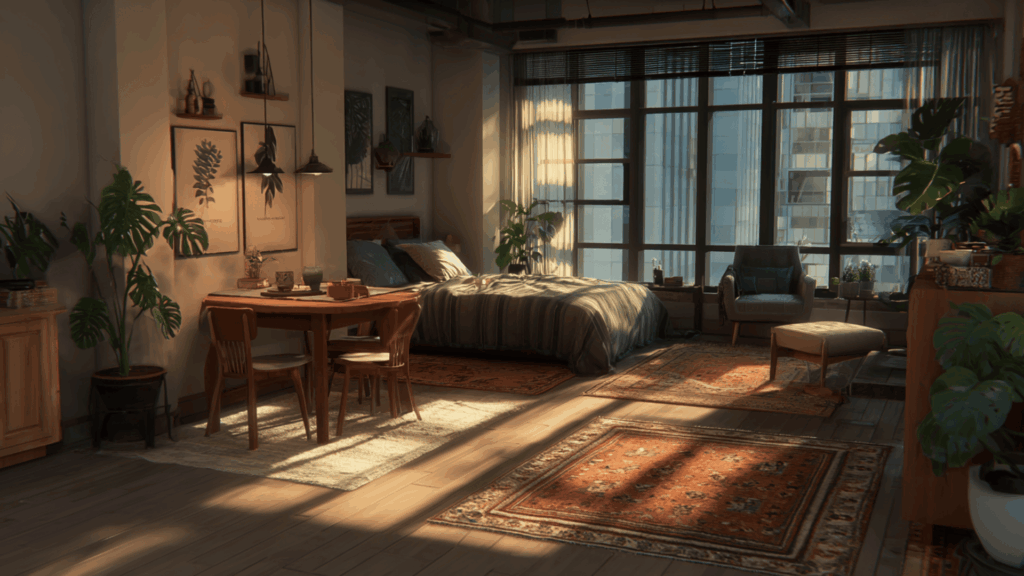
Define different functional areas in open floor plans using appropriately sized area rugs. Dining rugs should extend at least 24 inches beyond table edges on all sides.
Living room rugs need to fit under the front furniture legs. This creates visual boundaries without physical walls blocking light.
11. Use Sofas to Divide Open Layouts
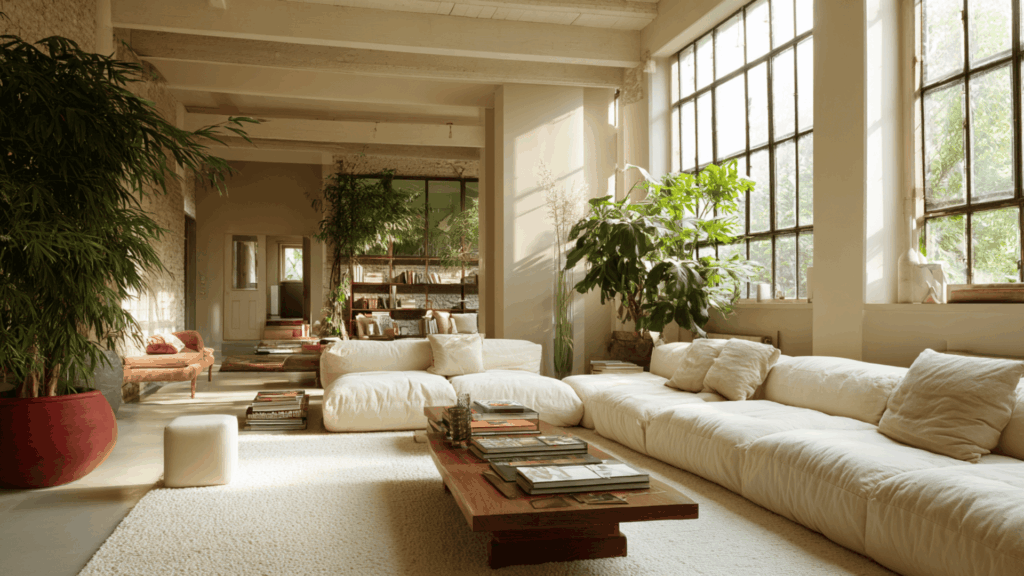
Position your sofa to separate sleeping and living areas in studios or open layouts. Choose one with a low back to maintain visual flow between spaces.
Add a console table behind the sofa for extra storage and display space. This creates privacy without closing off areas completely.
12. Keep Walkways at Least 36 Inches Wide
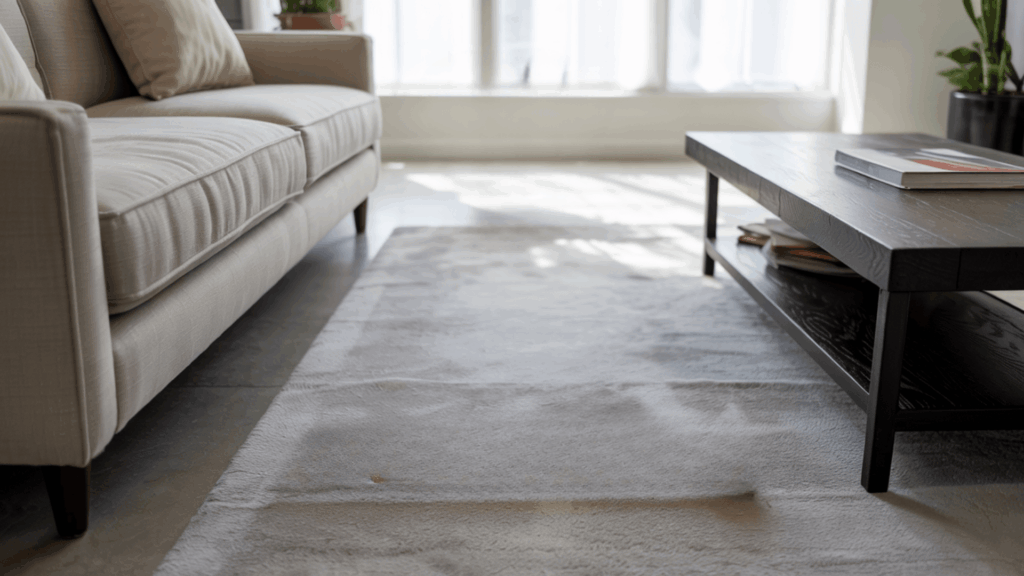
This standard width allows two people to pass comfortably without bumping into furniture.
In tight spaces, prioritize the main walkway from the entrance to the bedroom over secondary paths. Clear pathways make apartments feel larger and function better for daily activities and entertaining guests.
13. Angle Furniture for Better Movement
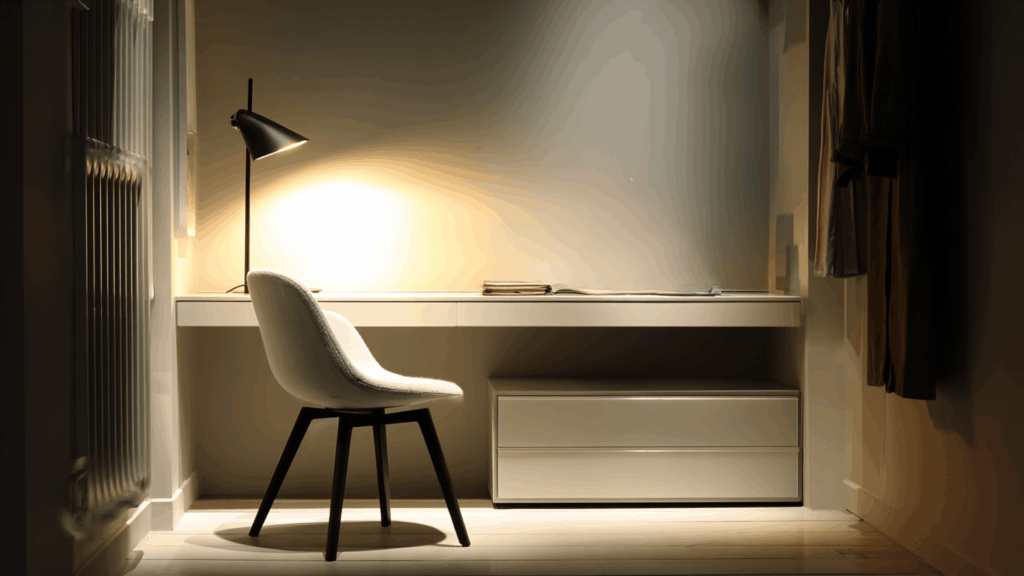
Break free from parallel and perpendicular arrangements when they don’t work for your space. Angling a chair or console table can improve traffic flow and create more interesting sight lines.
This technique works especially well in awkward corners or narrow rooms with challenging layouts.
14. Choose Round Tables for Tight Spaces
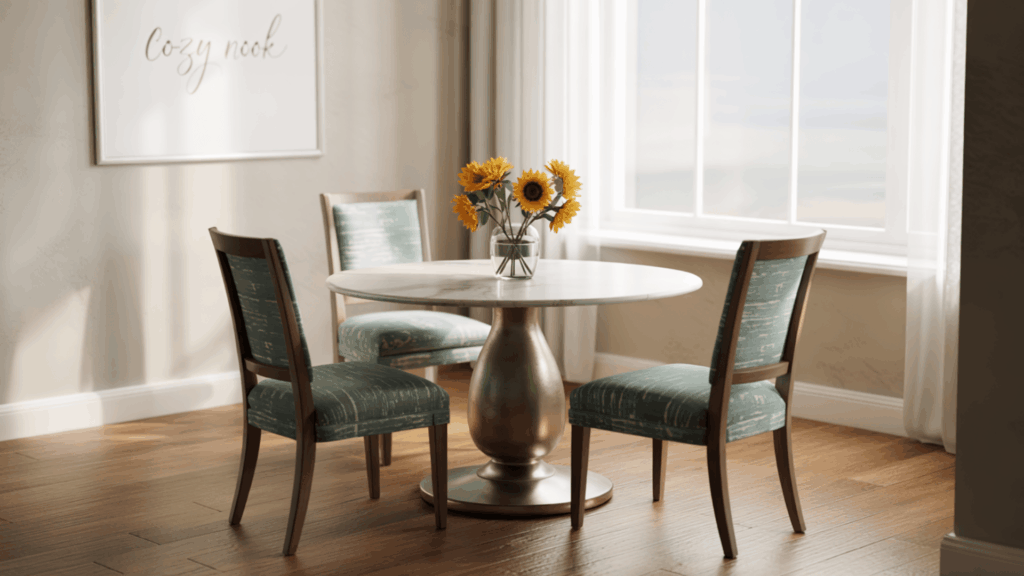
Round dining and coffee tables allow better movement around them than rectangular pieces. They also feel less imposing in tight quarters and can accommodate more people when needed.
Choose pedestal bases instead of four legs to maximize legroom and floor space underneath.
15. Design Comfortable Conversation Areas
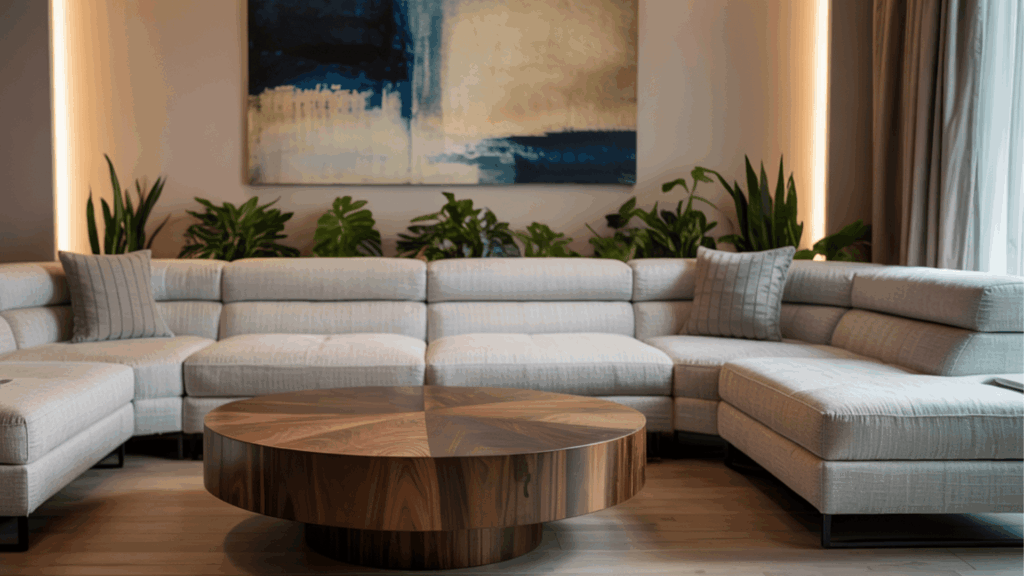
Arrange seating so people can talk comfortably without shouting across large rooms. The ideal distance between speakers is 4-8 feet.
Group furniture encourages interaction, rather than directing everyone’s attention to the television. This makes your apartment feel more social and welcoming to guests.
16. Leave Breathing Room for Flexibility
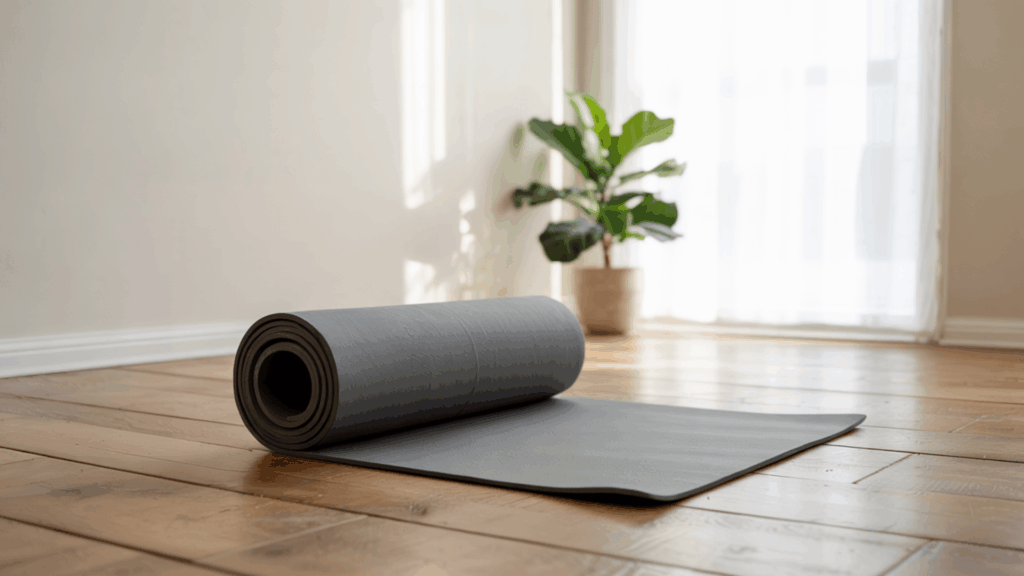
Resist the urge to fill every corner with furniture or decoration. Open areas make rooms feel larger and give you flexibility for temporary needs like exercise, entertaining, or seasonal decorations.
Empty space is just as important as filled space in creating balanced, comfortable rooms.
Lighting Tips for Modern Apartment Interiors
Good lighting turns any apartment from basic to beautiful. These lighting strategies help you create warmth, expand spaces visually, and provide the right illumination for every activity throughout your day.
17. Layer Ambient, Task, and Accent Lights
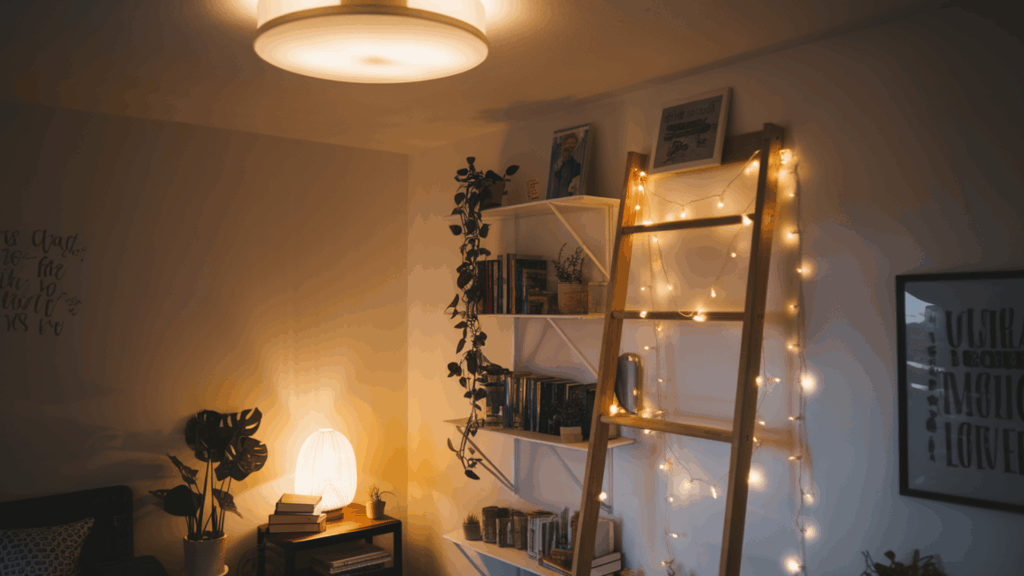
Combine general lighting like overhead fixtures, task lighting for reading or work, and accent lighting such as candles or string lights.
This creates depth and flexibility for different activities and moods. Avoid relying on single overhead fixtures that create harsh shadows and flat lighting.
18. Brighten Dark Corners with Floor Lamps
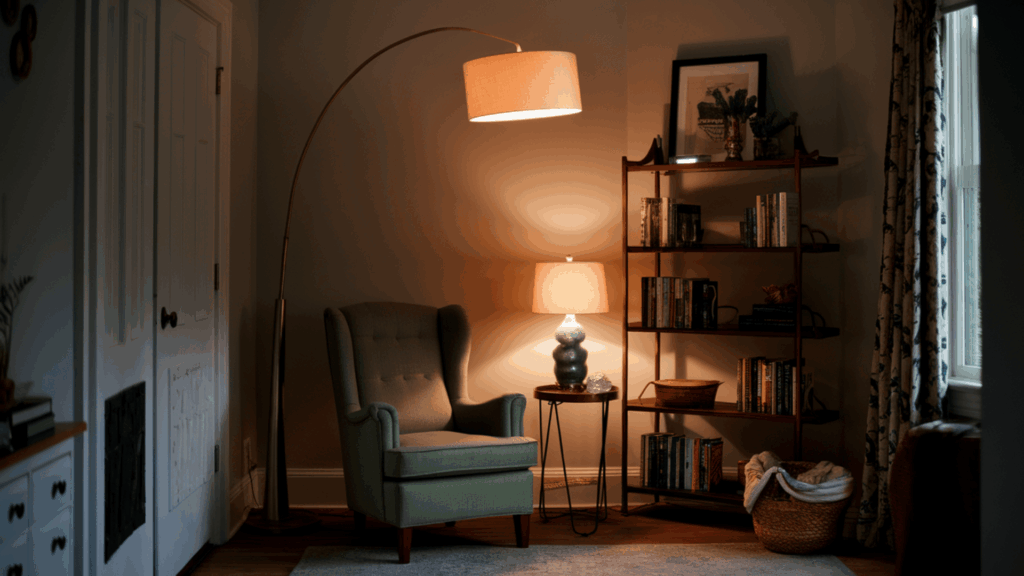
Dark corners make rooms feel smaller and less welcoming. Place tall floor lamps with upward-facing shades to wash walls with light and make ceilings appear higher.
Choose lamps with multiple bulbs or adjustable brightness for maximum impact in challenging lighting situations.
19. Mix Table Lamp Heights for Interest

Vary lamp heights throughout rooms to create visual interest and better light distribution.
Use tall lamps on low surfaces like coffee tables and shorter lamps on high surfaces like end tables or shelves. This prevents flat, uniform lighting that makes spaces feel boring.
20. Use LED Strips Under Cabinets or Shelves
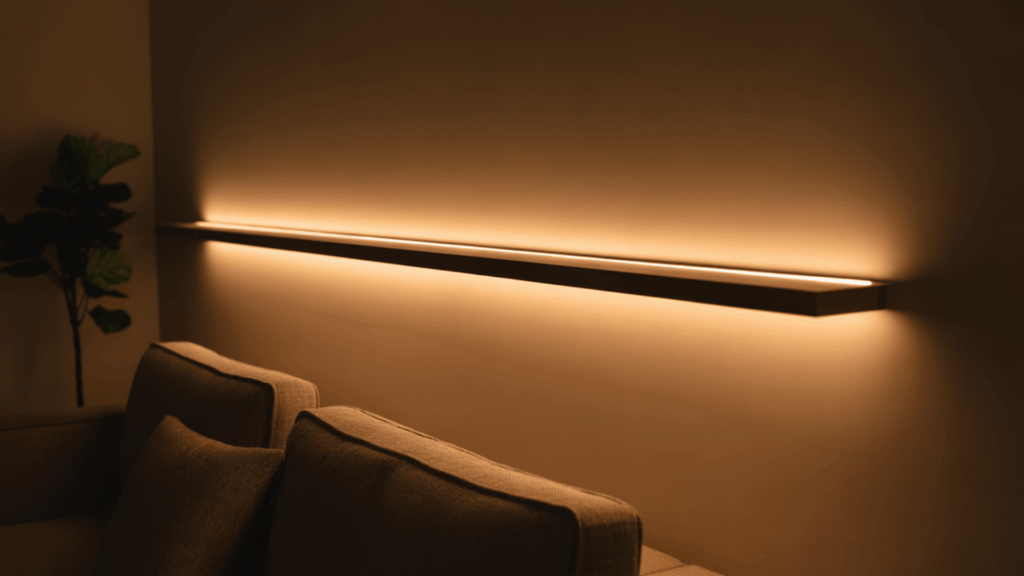
Add modern under-cabinet lighting in kitchens, behind headboards, or under floating shelves without electrical work.
These strips create professional, built-in looks while providing practical task lighting. Choose warm white options and hide power cords for the cleanest appearance possible.
21. Choose Warm White Bulbs
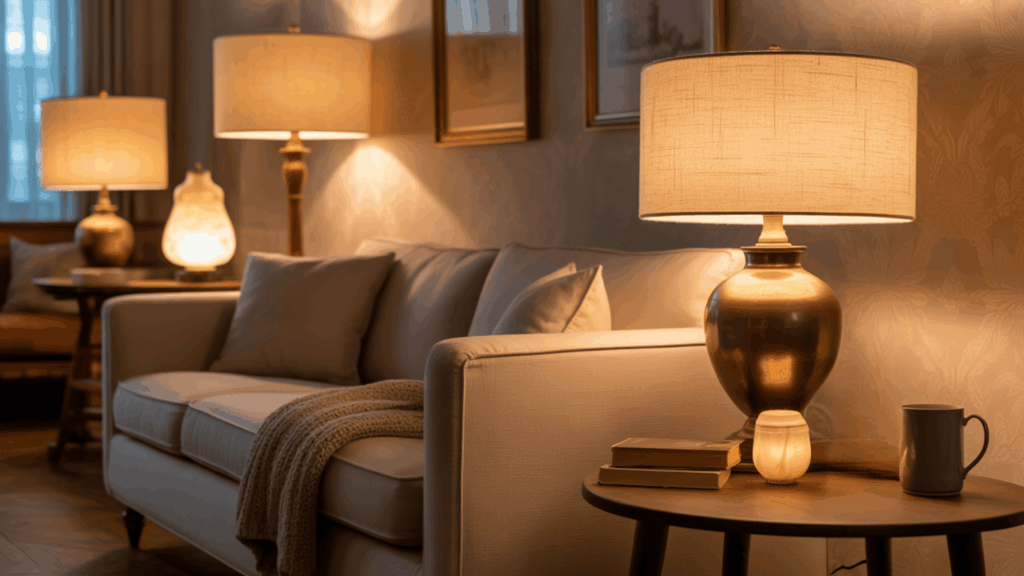
These color temperatures create cozy, welcoming atmospheres that make people want to relax and stay longer.
Save cool white bulbs for task areas like home offices or bathroom vanities where you need clear, bright light for detailed work. Consistent color temperature throughout creates harmony.
22. Install Dimmers to Adjust Brightness
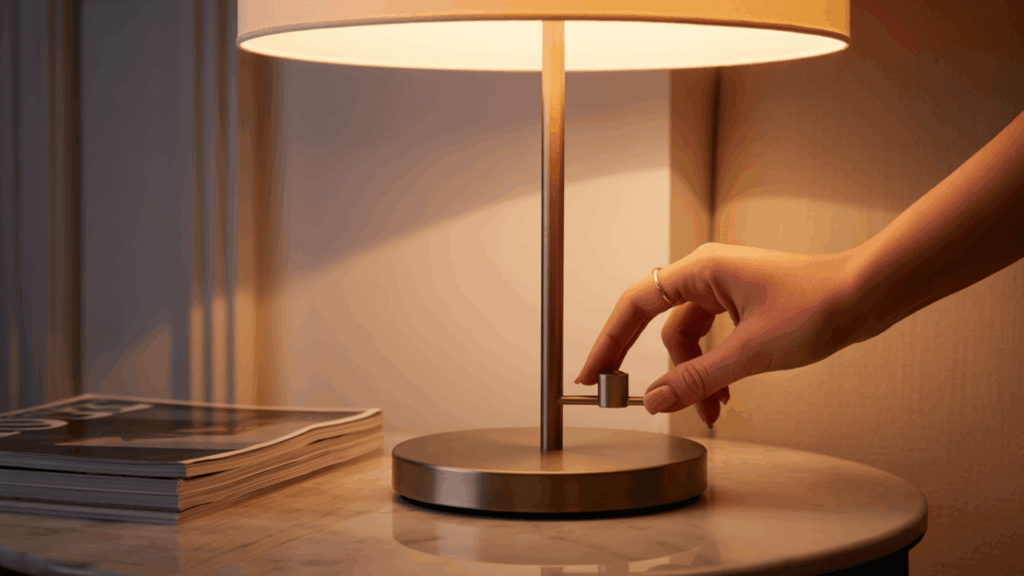
Use plug-in dimmers with table and floor lamps to adjust lighting for different activities and times of day.
Bright light works for cleaning and tasks, while dim light creates relaxation and intimacy. Dimmers also extend bulb life and reduce energy costs over time.
23. Pick Light-Colored Lamp Shades
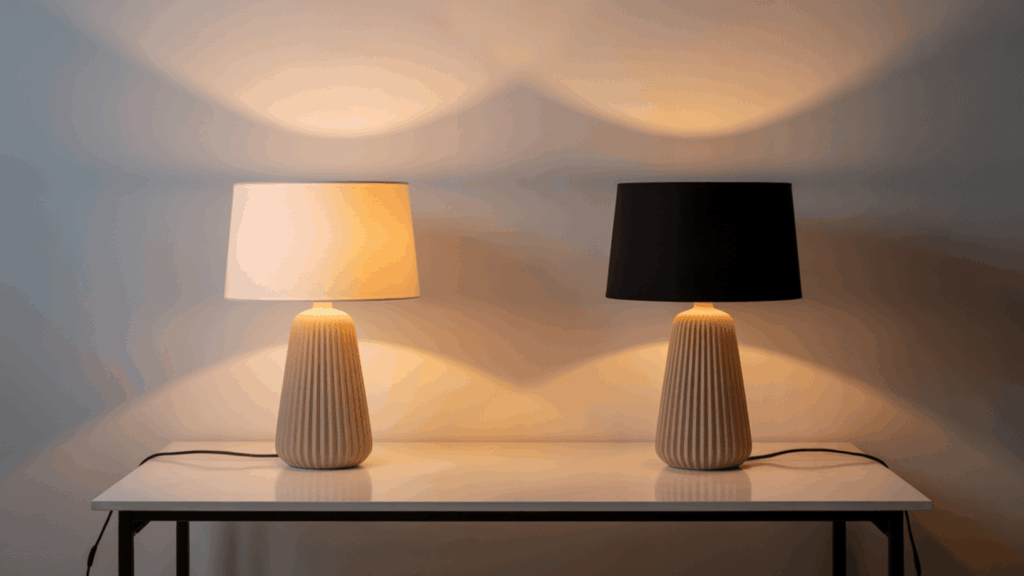
White and cream shades spread light throughout rooms while dark shades focus light downward in specific areas.
Choose light shades for general lighting and dark shades only for reading or task lighting. This maximizes the impact of each light source in your space.
24. Avoid Glare with Strategic Lamp Placement
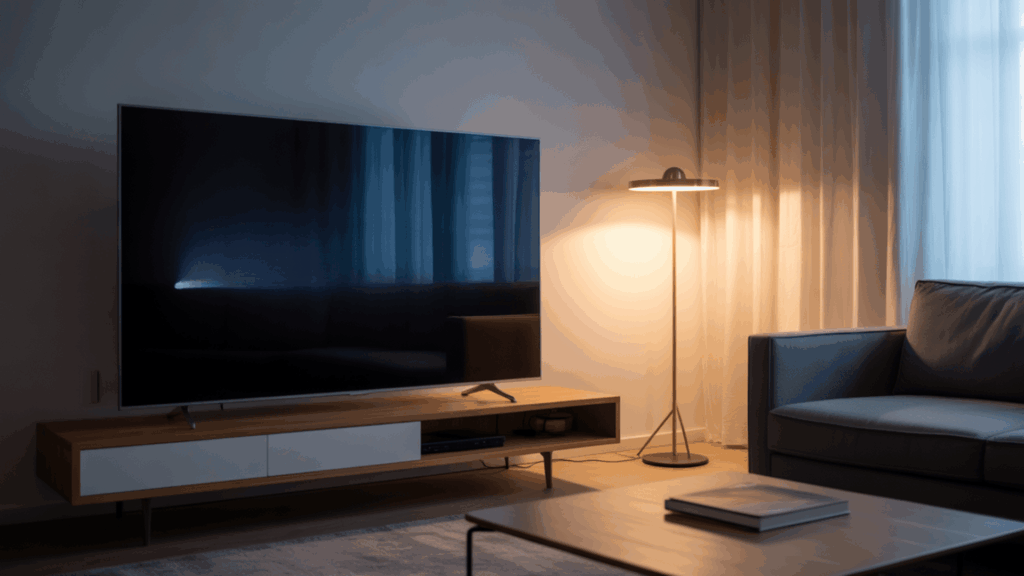
Place lamps where they won’t reflect in television screens, computer monitors, or glossy surfaces. Side lighting is usually more flattering for faces than overhead lighting.
Consider sight lines from seating areas when positioning lamps to prevent uncomfortable glare during regular activities.
Window Treatments for Light and Privacy
Windows bring life to any apartment, but managing light and privacy takes planning. These window treatment strategies help you maximize natural light while maintaining comfort and privacy throughout the day.
25. Mount Curtains High and Wide
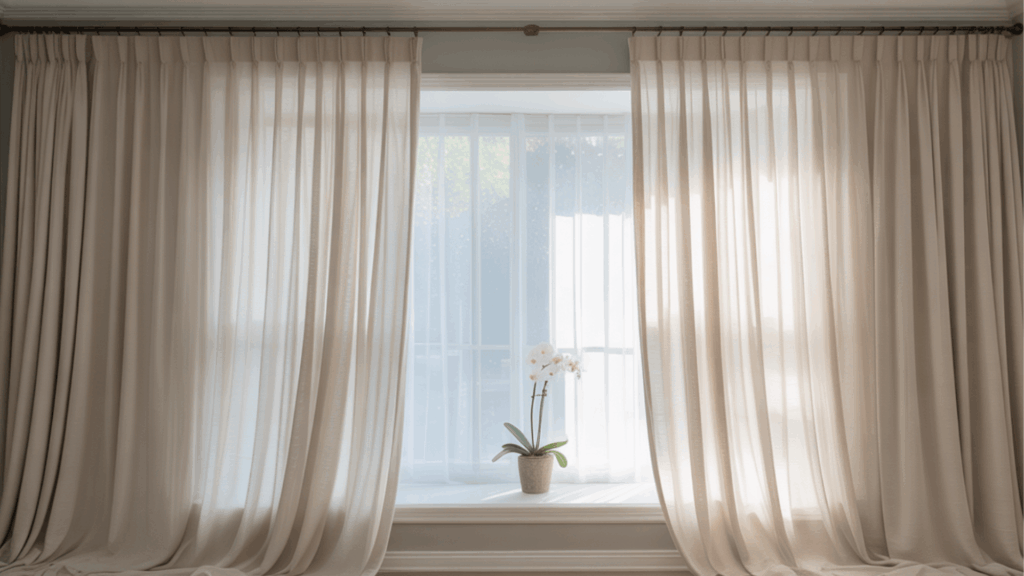
Mount curtain rods 6-12 inches above window frames and extend them beyond the frame width on both sides.
This makes windows appear much larger and allows maximum light when the curtains are open. The technique also makes ceilings look higher, creating a more spacious feeling overall.
26. Layer Sheers with Blackout Panels
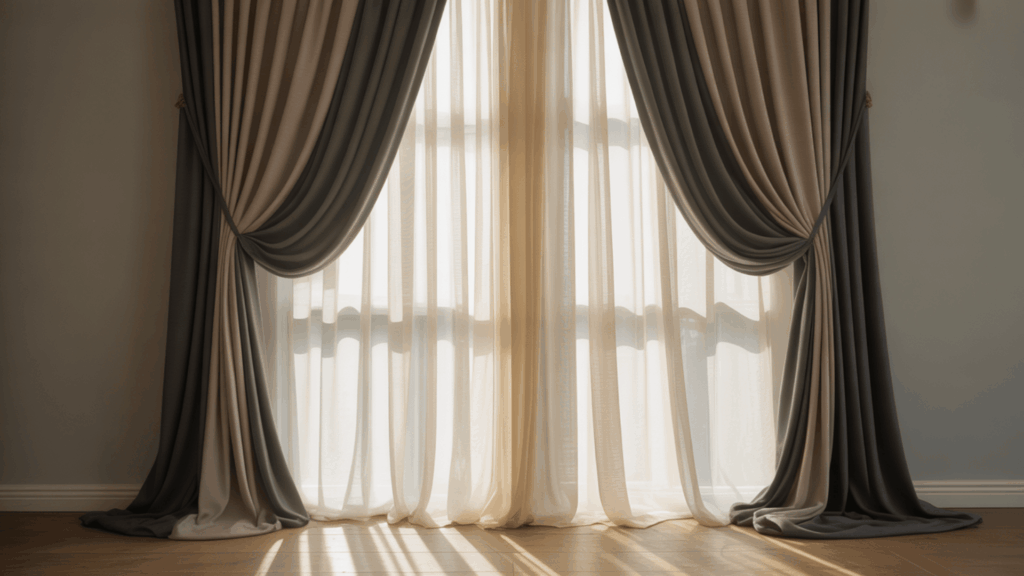
Combine sheer curtains for daytime privacy with blackout panels for sleeping and light control. This gives you flexibility throughout the day without compromising style or function.
Choose coordinating colors and similar hanging styles to maintain a cohesive look across different window sizes.
27. Choose Cordless Shades for Safety and Style
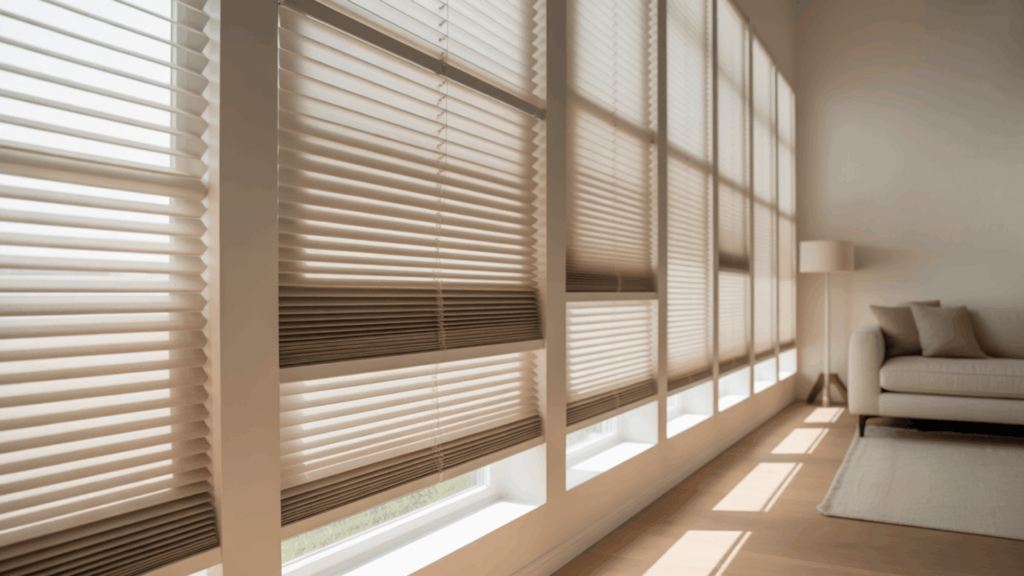
Cordless options look cleaner and more modern than traditional corded versions. Roman shades, cellular shades, and roller blinds all come in cordless styles.
They’re also safer for homes with children and pets while providing smooth operation and a contemporary appearance.
28. Use Frosted Film for Bathroom or Street-Facing Windows

Apply removable frosted window film to bathroom windows or street-facing areas that need privacy without blocking natural light.
This solution works perfectly for rental apartments since it removes cleanly without damage. Choose patterns that complement your overall design style for the best results.
Smart Storage Ideas for Modern Apartment Living
Smart storage keeps apartments looking clean and organized while maximizing usable space. These storage strategies help you find room for everything without cluttering your living areas or compromising your design.
29. Maximize Vertical Storage in Closets and Walls
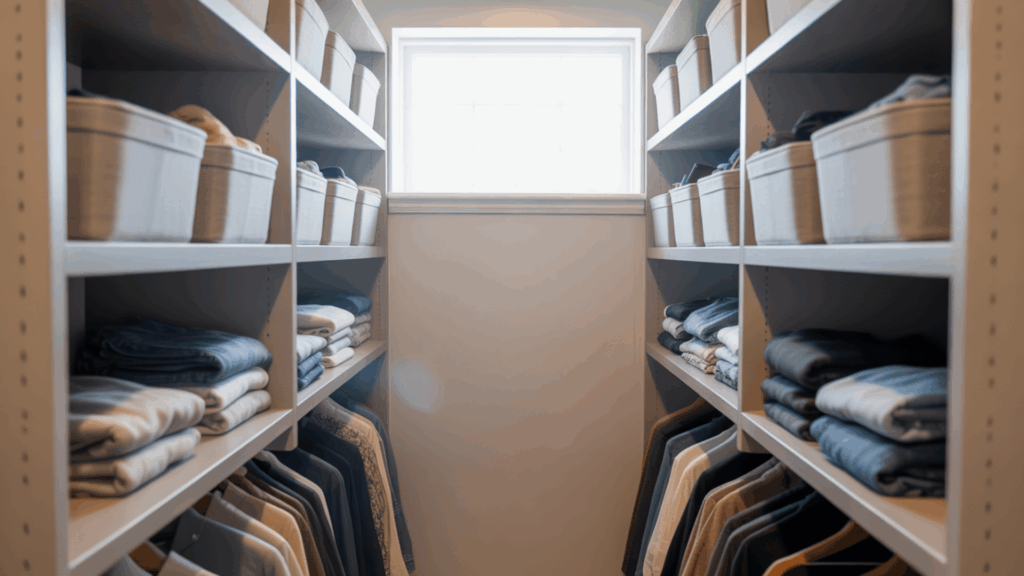
Install shelves up to ceiling height in closets, pantries, and storage areas. Store seasonal items on high shelves and everyday items at eye level for easy access.
This approach dramatically increases storage capacity without taking up additional floor space in already tight quarters.
30. Buy Furniture with Hidden Storage
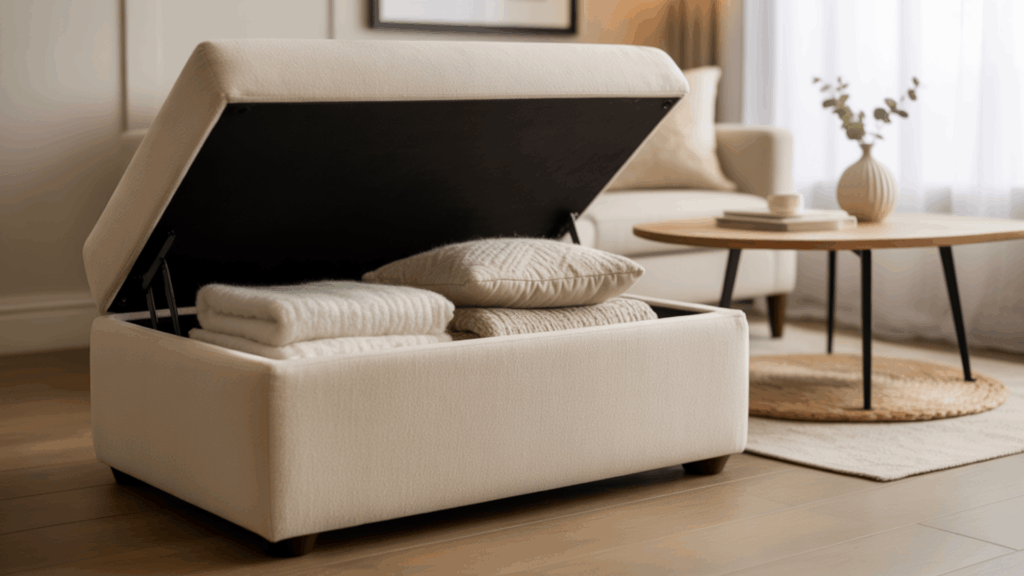
Ottoman storage benches, beds with built-in drawers, and coffee tables with lift tops maximize storage without adding extra furniture pieces.
Look for dual-purpose items that serve your daily needs while hiding clutter. This approach keeps surfaces clear and maintains a clean, modern appearance.
31. Use Overlooked Areas for Extra Storage
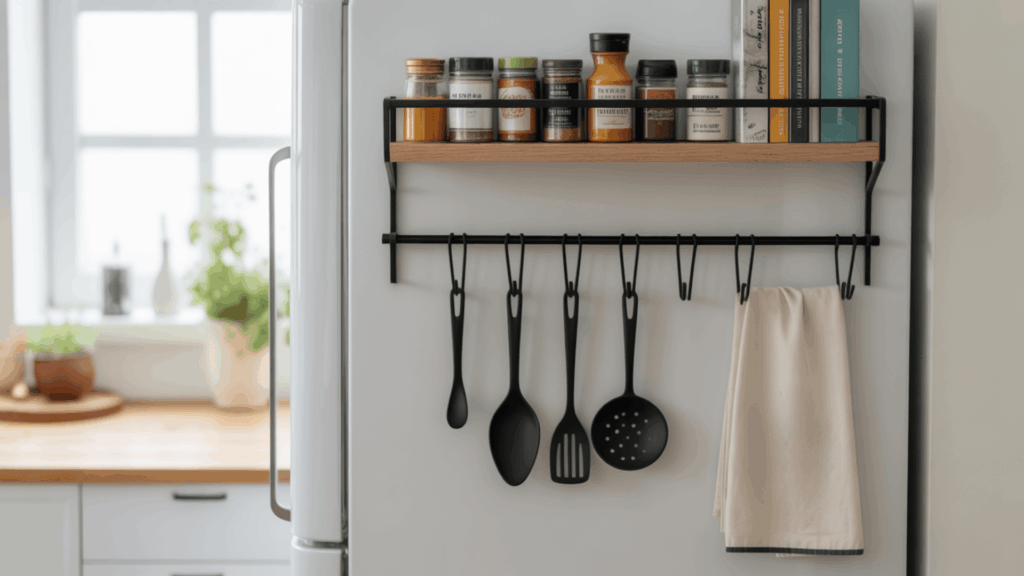
Turn unused areas under staircases, above refrigerators, and behind doors into valuable storage space.
Add hooks for coats and bags, narrow shelving for supplies, or small cabinets for items you don’t need daily. These overlooked spots often provide surprising amounts of additional storage.
32. Choose Stylish Storage That Matches Decor

Use matching bins, baskets, and containers so storage becomes an attractive decoration rather than a necessary eyesore. Label everything clearly for quick item location.
Choose storage solutions that complement your color scheme and design style to maintain a cohesive appearance throughout your apartment.
Space-Saving Furniture and Decor Tips
These final strategies focus specifically on making small apartments feel and function like much larger spaces. Use these techniques to overcome size limitations and create comfortable, stylish homes regardless of square footage.
33. Use Furniture with Visible Legs
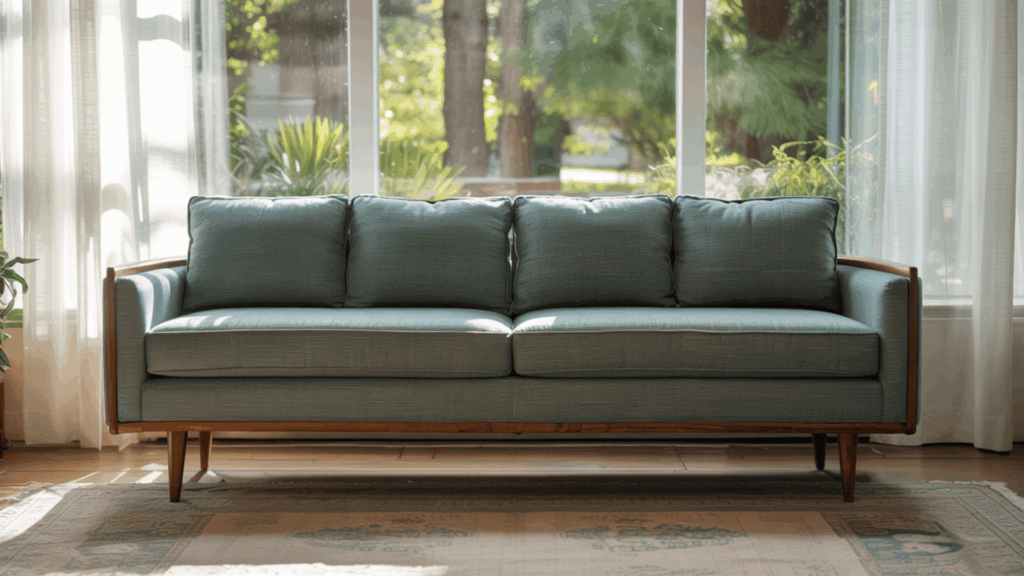
Furniture sitting directly on the floor makes spaces feel cramped and heavy. Select pieces with visible legs so you can see floor space underneath, creating illusions of openness and airiness.
This technique works especially well for sofas, chairs, and storage pieces in tight quarters.
34. Add Mirrors to Reflect Light and Space

Position large mirrors opposite windows to reflect outdoor views and natural light back into rooms. Place mirrors to reflect attractive parts of your space rather than clutter or blank walls.
This creates the illusion of additional windows and expanded square footage at minimal cost.
35. Pick Multi-Functional Pieces that Do More
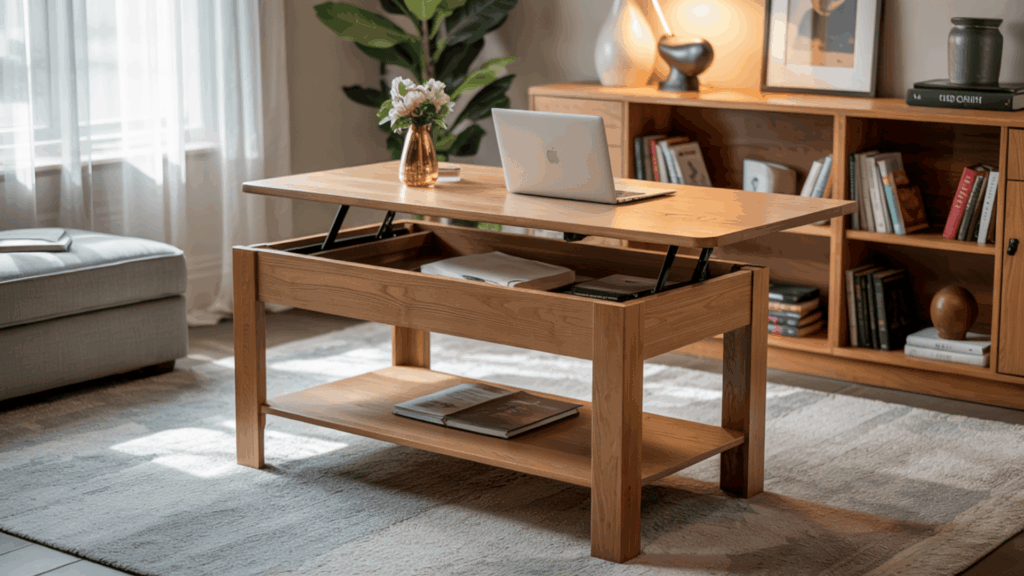
Choose dining tables that serve as desks, ottomans providing seating and storage, or bookshelves acting as room dividers.
Multi-functional furniture works harder in small spaces by serving multiple needs without requiring additional floor area. This approach maximizes utility while minimizing clutter and crowding.
Room-by-Room Quick Tips for Modern Apartment Design
Living Room: Keep coffee tables 14-18 inches from seating for comfortable leg room. Use overhead and side lighting combinations. Choose sofa sizes that leave adequate space for traffic flow around seating areas.
Kitchen: Maintain 42 inches between islands and cabinets for comfortable movement while cooking. Use vertical storage solutions for dishes and pantry items. Add under-cabinet lighting for better food preparation visibility.
Bedroom: Position beds so you can walk around on at least two sides comfortably. Use bedside tables level with the mattress tops for easy access. Install blackout window treatments for better sleep quality.
Bathroom: Use light colors to reflect available natural and artificial light sources. Add humidity-loving plants for natural air purification. Maximize space with over-toilet storage solutions and wall-mounted accessories.
Home Office: Position desks perpendicular to windows to minimize computer screen glare. Use dedicated desk lamps for focused task lighting. Keep cords organized with clips or management tubes for a clean appearance.
Conclusion: Design a Modern Apartment That Works for You
Creating a modern apartment isn’t about having a huge space; it’s about making smart design decisions that match your lifestyle.
From vertical storage tricks and layered lighting to layout tweaks and hidden storage furniture, these ideas help you make the most of every inch.
Remember: good apartment design isn’t one-size-fits-all. It’s about personalizing your space so it feels just right every day.
If you’re starting fresh or just want a better flow and feel, the right changes can make a huge impact, without a full remodel.
Got a favorite idea from this list? Have your own small-space trick that works wonders? Drop a comment below; we’d love to hear how you’re making your apartment feel like home.


